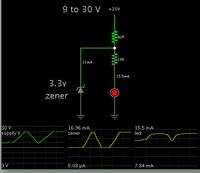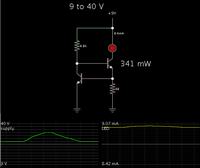tiwari.sachin
Full Member level 6

I have been trying to wrap my mind around this one for quite some time now... I need to drive a opto isolator and the input voltages can change from 9V to 30V. The output ofcourse goes to a controller pin.
How can I design the current limiting resistor in such a scenario.
Are there any better options to achieve the same result without use of opto isolator.
- - - Updated - - -
cant i just use a 5v or 3.3v zener at the input. How effective and reliable would this be. How to calculate, upto what voltage inputs, the zener gonna work.
How can I design the current limiting resistor in such a scenario.
Are there any better options to achieve the same result without use of opto isolator.
- - - Updated - - -
cant i just use a 5v or 3.3v zener at the input. How effective and reliable would this be. How to calculate, upto what voltage inputs, the zener gonna work.




